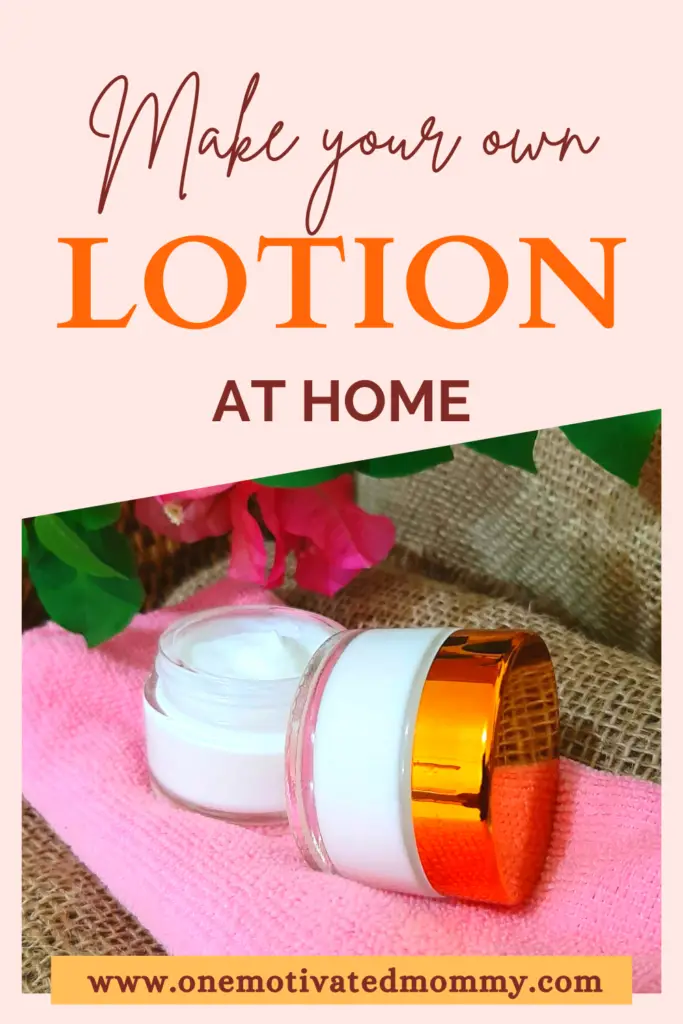If you are a do-it-yourself enthusiast as I am, you will love making your own lotion at home.
The process is not complicated at all. There are basically three main steps – weigh, heat and mix.
Lotions and creams are essentially oil and water and since oil and water don’t mix, an emulsifying agent is used. In this case emulsifying wax. They are classified as emulsions. The difference between creams and lotions is that lotions typically have at least 70% water while creams are thicker containing between 20% and 50% water.
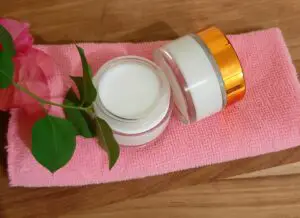
There are so many benefits to using homemade lotions over commercial brands.
- They tend to be healthier for the skin without unnecessary chemicals.
- You can control the ingredients using natural plant oils, shea and cocoa butter and make your own infusions with your favourite herbs.
- There is the option of leaving it unscented or adding your favourite fragrance. Many suppliers of fragrances for soaps and lotions have dupes of popular scents such as Victoria’s Secret, Love Spell.
- Not to mention that you can make your own luxurious high-quality lotion for yourself and your family at a fraction of the cost.
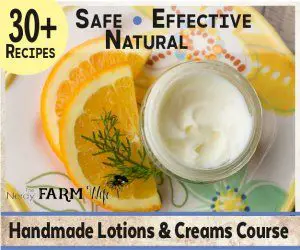
Equipment and Tools Needed
- Digital scale
- Immersion blender
- Thermometer
- 70% Rubbing Alcohol in a spray bottle
- Microwave oven or double boiler
- 2 Heat-safe containers
- Pan (for water bath)
- Spatula
- Spoons
- Plastic containers to weigh ingredients
- Glass container to weigh fragrance
- Funnel or container with funnel spout
- Disposable Gloves
- Hairnet
- Packaging for lotion
- Cheesecloth
Suppliers
Other than Amazon, some soapmaking suppliers also carry ingredients to make creams and lotions. There are many others but here are a few:
Ingredients Used to Make This Soft and Silky Lotion
Distilled water is used as it is free of minerals and contaminants that may be present in tap or purified water.
Emulsifying wax does the important job of holding the water and oil in the lotion together, therefore, providing stability to the product. It improves the consistency and texture and helps to thicken the lotion.
Stearic acid is a naturally occurring fatty acid derived from animal or plant fats. It works well as a thickening agent and also helps to keep the emulsion stable.
Grapeseed oil pressed from the seeds of grapes, is a good source of omega fatty acids and vitamin E. It has antioxidant properties which fight against free-radical damage, keep moisture in the skin and may help to minimize fine lines and wrinkles.
Sweet Almond oil softens the skin due to its emollient properties and can even skin tone. It is anti-inflammatory and may reduce the appearance of scarring due to acne. It is also rich in vitamin E and helps to retain moisture in the skin.
Glycerine is a humectant that is, it attracts water from the air or from the deeper layer of skin (dermis). This provides hydration and therefore moisturization of the skin.
Vitamin E (tocopherol) is used as an anti-oxidant in the lotion to prevent oxidization of the oils which causes rancidity.
100% Silk Powder contains the proteins fibroin and sericin produced in silk from the Bombyx mori silkworm. It contains 18 amino acids and has been shown to have a regenerative effect on the skin improving elasticity and moisture retention. It also adds a silky feel to the lotion.
Optiphen is a preservative used in cosmetics to protect against mould and bacteria in the finished product. It is paraben-and formaldehyde-free. Optiphen is added when the temperature of the lotion is 176°F or below.
The fragrance is totally optional in lotion. However, if one is being used, ensure that it is skin-safe and cosmetic grade. Do not exceed the percentage usage indicated by the manufacturer, in most cases up to 2%. Check the flashpoint of the fragrance as well, so that it can be added at the correct temperature during the cool-down phase.
- Related Post – DIY Body Butter With Jamaican Black Castor Oil
- Related Post – Handcrafted Cold Cream Recipe
The Process
There are three (3) phases to making lotion: The oil phase, the water phase and the cool-down phase.
The oil phase entails the oils, emulsifying wax, and stearic acid. The water phase entails distilled water and water-soluble additives such as glycerine and powdered silk. The cool-down phase is where heat-sensitive ingredients, such as the preservative and fragrance, are added after the oil and water phases have been combined and the temperature has dropped to within a suitable range, (this temperature depends on the preservative and fragrance used.)
Sanitization
Sanitization is very important to reduce the chance of contamination of your finished product. It is important to cover your hair with a hairnet or scarf and wear disposable gloves.
Clean and sanitize all surfaces, equipment, utensils, packaging etc by spraying with 70% rubbing alcohol and allowing them to dry. If you are using your kitchen to make your lotion, do not cook while making the lotion as particles from cooking in the air can descend on your equipment and products.
Let’s Make Some Lotion
This lotion, as the name implies is soft and silky yet it is rich and long-lasting. It leaves your skin well-moisturized, and smooth and can be used daily.
Ingredients to Make Soft and Silky Lotion
Oil Phase
- 28 grams Grapeseed oil
- 34 grams Sweet Almond oil
- 10 grams Stearic acid
- 24 grams Emulsifying wax
Water Phase
- 397 grams Distilled water
- 45 grams Glycerine
- 1 gram Silk Powder
Cool Down Phase
- 5.5 grams Optiphen
- 4.5 grams Fragrance
- 6 grams Vitamin E oil
I used the double boiler method to make this lotion. To see how it can be done using a microwave oven see this video by Anne-Marie Faiola of Soap Queen.
The scent I used is Grapefruit and Mangosteen from Candle Science. The flashpoint of this fragrance is 180°F
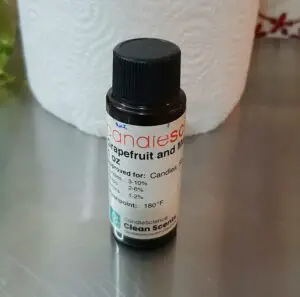
Clean and sanitize your surfaces then gather and sanitize all your tools and equipment.
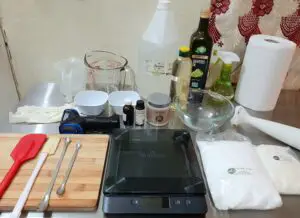
Remember to sanitize your packaging as well by spraying it with 70% rubbing alcohol and allowing it to dry completely.
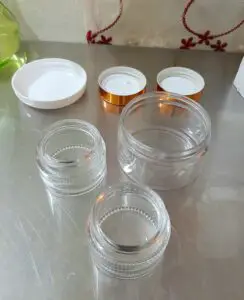
Weigh the emulsifying wax and the stearic acid.
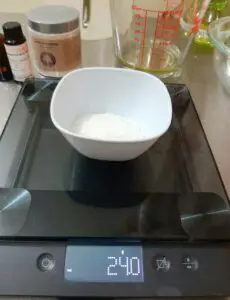
Weigh the oils in the heatproof container. Then add the emulsifying wax and stearic acid to the oils.
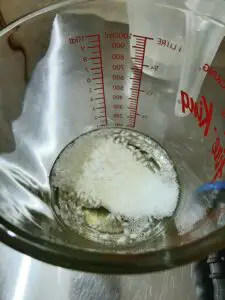
In another, heatproof container, weigh the water.
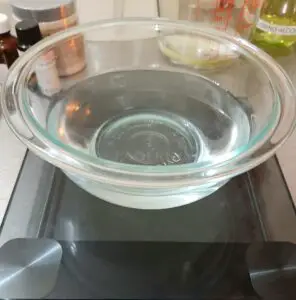
Weigh the silk powder. Since only a gram was needed, it was easier to tare the scale with the opened container and remove one gram.
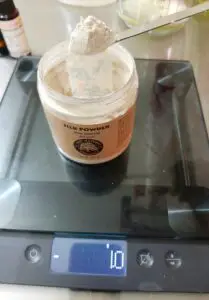
Add the silk powder to the distilled water.
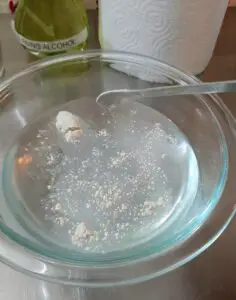
Then add the glycerine to the water and silk.
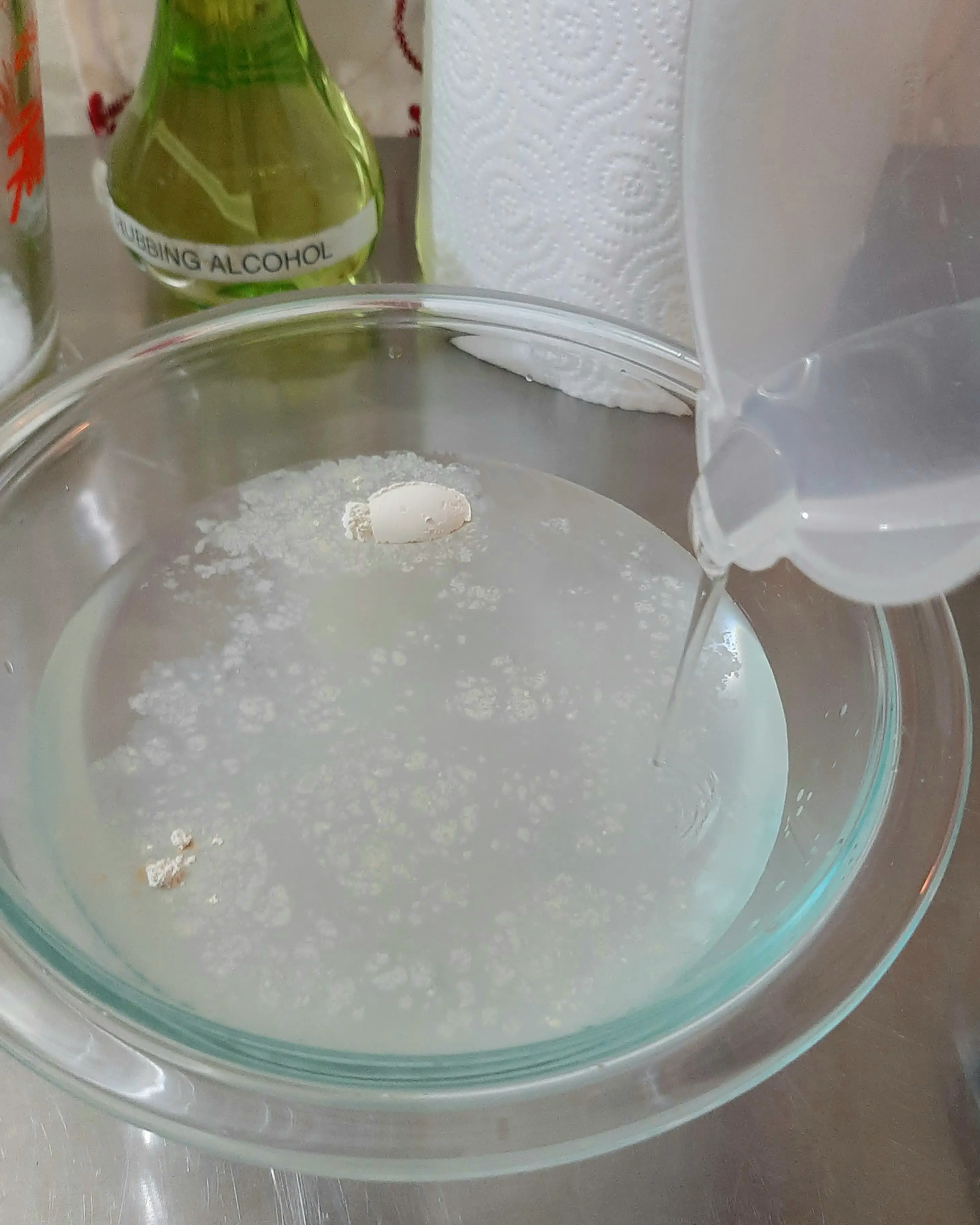
Immerse the water phase in a double boiler and allow it to heat up to warm but not hot. While it is heating up, set up a hot water bath using normal water heated in a kettle or stovetop then poured into a pan. This is to place the water phase to maintain its heat while the oil phase is heating up.
Use a spoon or spatula to dissolve the glycerine and silk in the water.
![]()
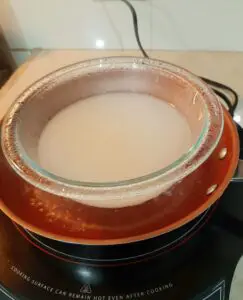
After placing the water phase in a water bath, heat the oil phase in the double boiler until all the ingredients are fully melted.
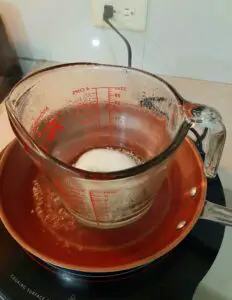
While the oil phase is melting, as it does take some time, I usually weigh and set aside the cool-down phase ingredients – In this case the Optiphen and the fragrance oil.
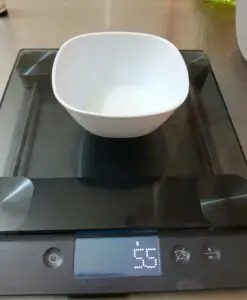
Remember to use a glass container to weigh the fragrance oil as plastic tends to hold on to the scent and in some cases react with the oil and deteriorate.
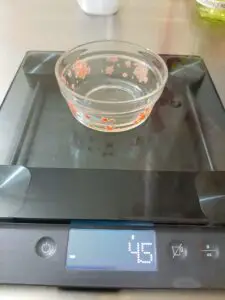
Stir the ingredients in the oil phase to help it dissolve.
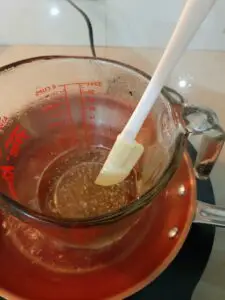
Once the oil phase is fully melted, remove it from the heat and pour the water phase into the oil phase. Immediately it turns a white milky colour.
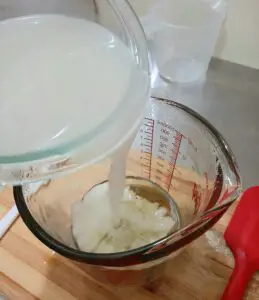
Next, insert the immersion blender and blend the mixture on medium speed for about 30 seconds. Allow it to rest for about another 30 seconds and mix again. Repeat this for about 3 minutes. Try not to let the lotion accumulate too many bubbles on the surface by keeping the blender submerged.
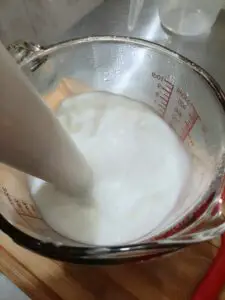
Allow the lotion to cool enough to reach a temperature suitable to add the preservative and fragrance. As mentioned before, the Optiphen has to be added at 176°F or below and the fragrance flash point listed on the label is 180°F.
I checked the temperature and added the cool-down ingredients at 153.5°F which was good for both ingredients without allowing the lotion to become thick.
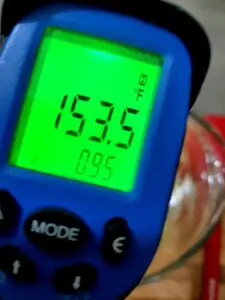
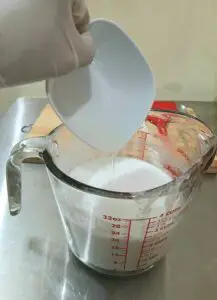
After adding the cool-down ingredients, on a low speed, use the immersion blender to incorporate them well into the lotion for about 15 seconds.
Now it is time to bottle the lotion.
Depending on the packaging you are using, either use a funnel or a container with a funnel spout to fill your bottles or jars. You may even pour directly from the mixing container if the jar is wide enough. Use a spatula to get all the lotion out.
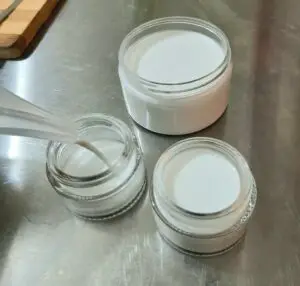
Once all the bottles/jars are filled, set them aside in an area where they will be undisturbed and cover lightly with a clean cheesecloth.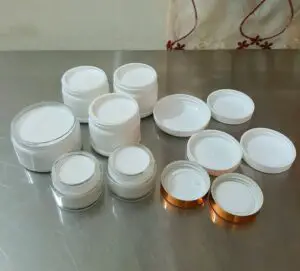
The lotion must then be allowed to cool completely uncapped! This is necessary to avoid condensation taking place under the caps or covers which could promote bacterial growth under the lids.
Once cooled, the now thickened lotion can be covered and stored in a cool dry place.
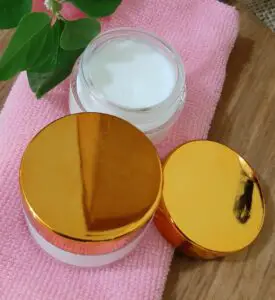
Enjoy your luxurious soft and silky handmade lotion!!!! Happy lotion-making! 🙂
